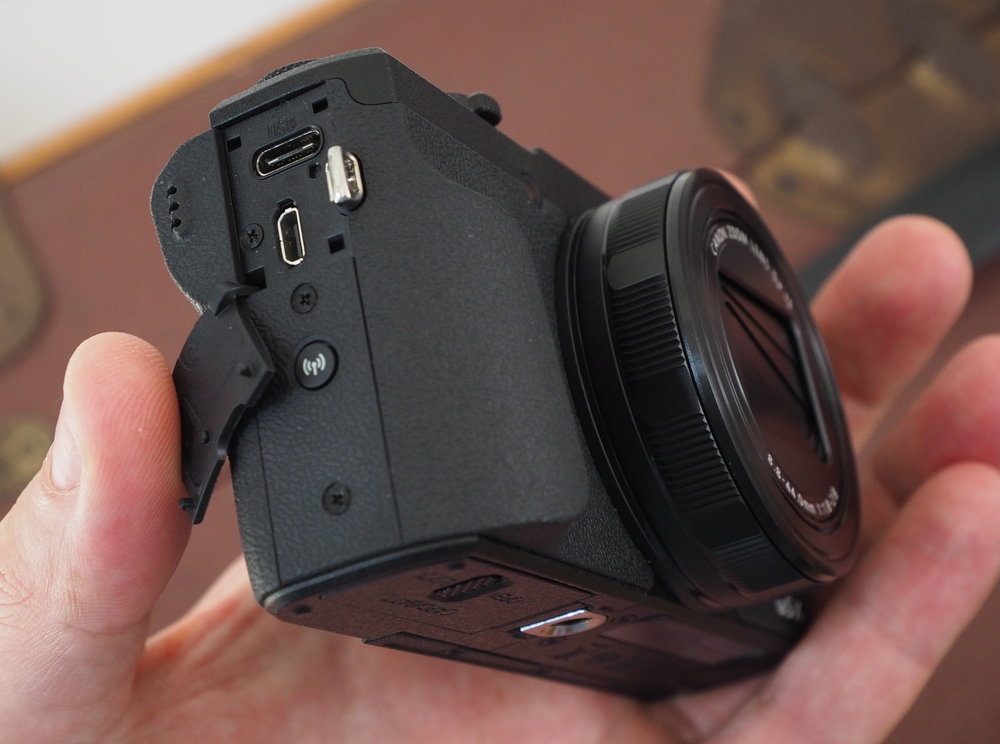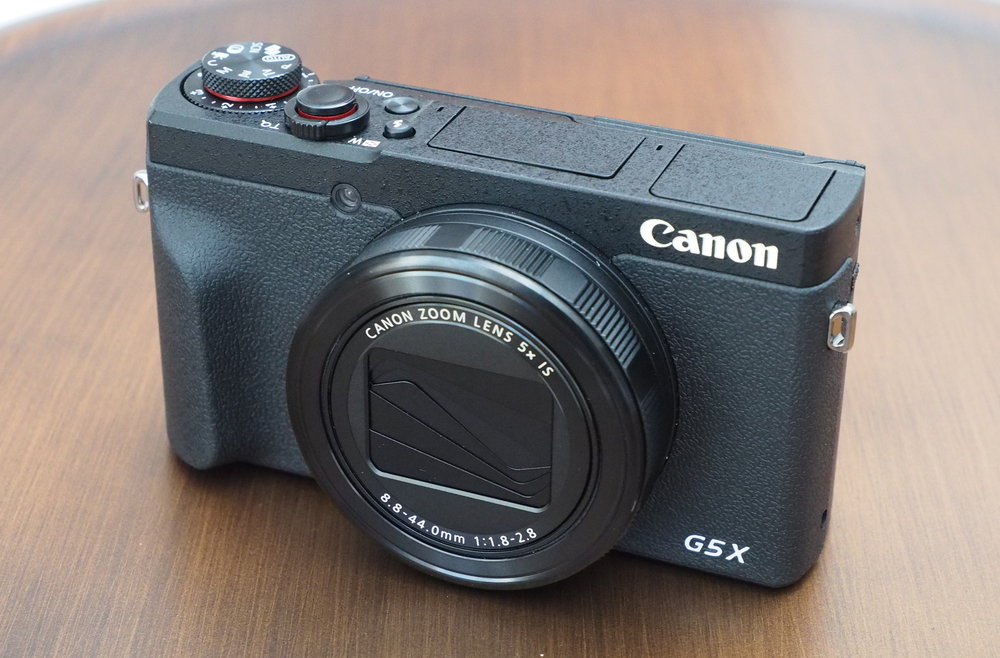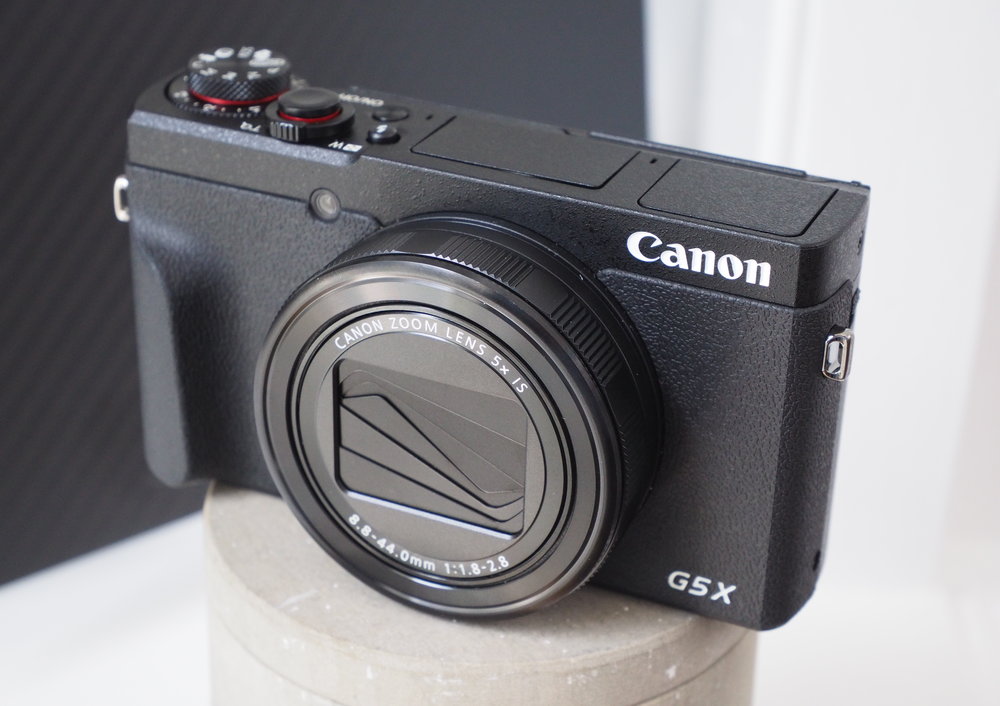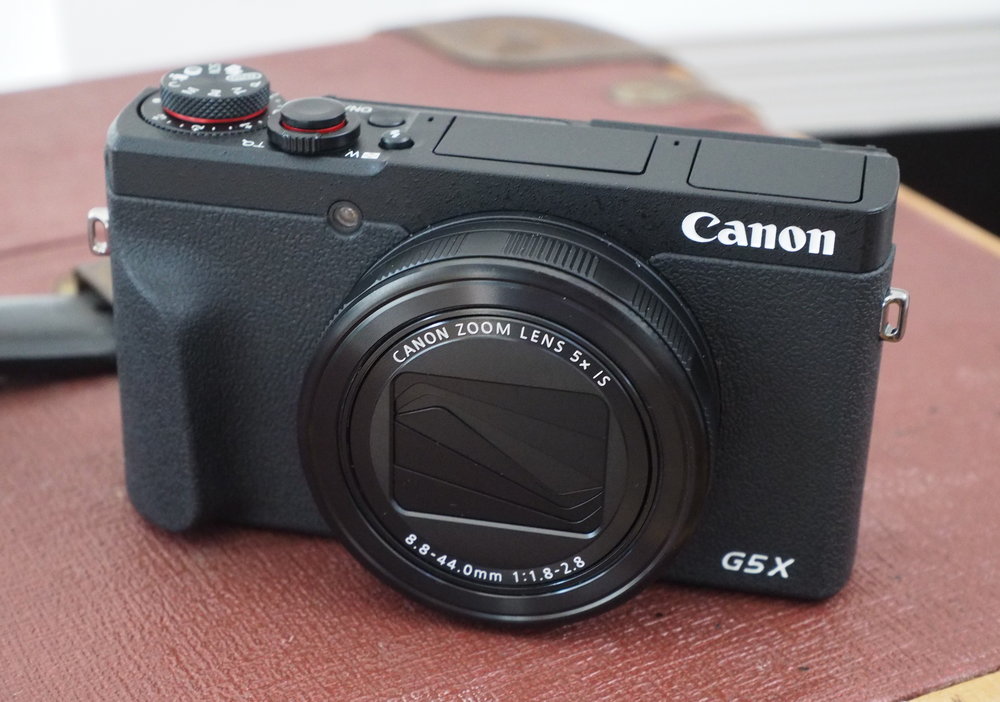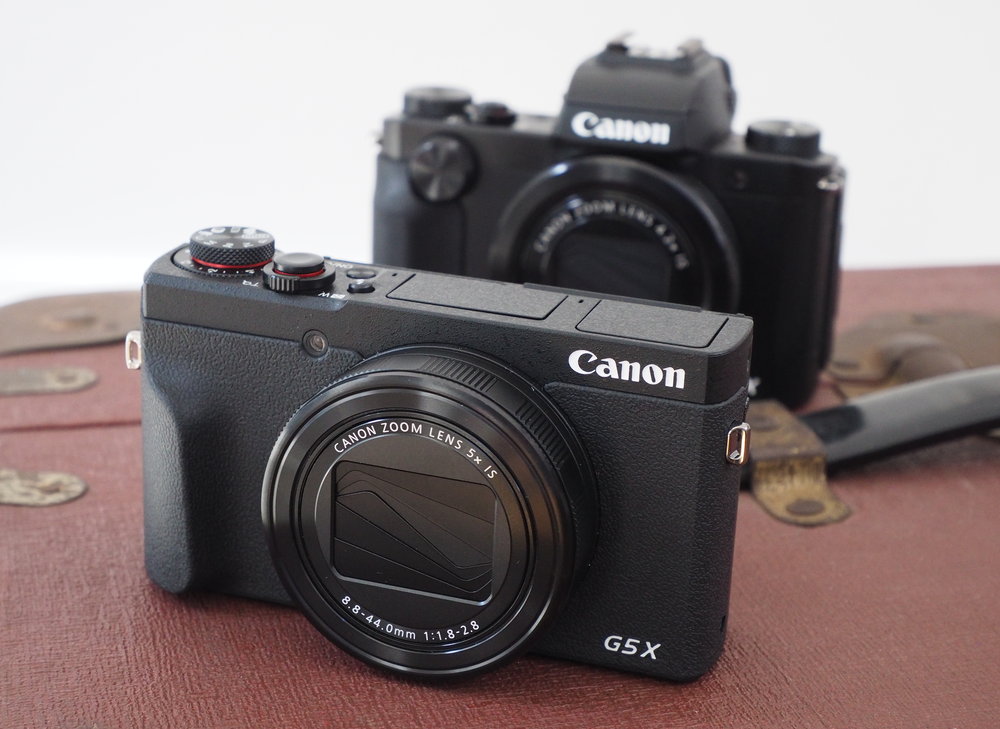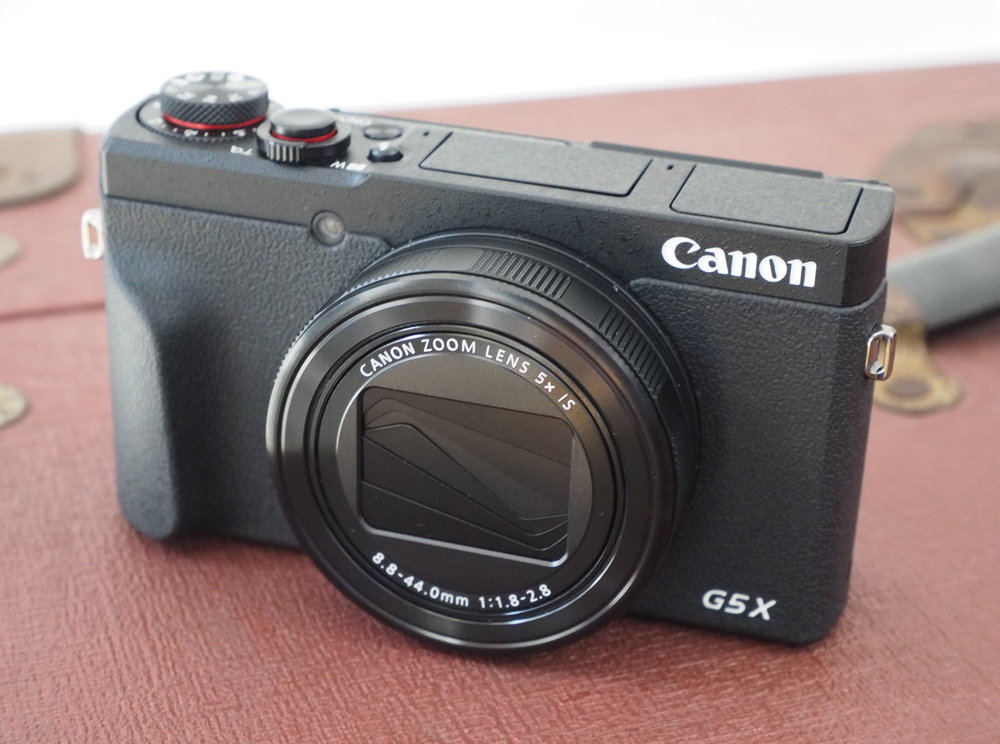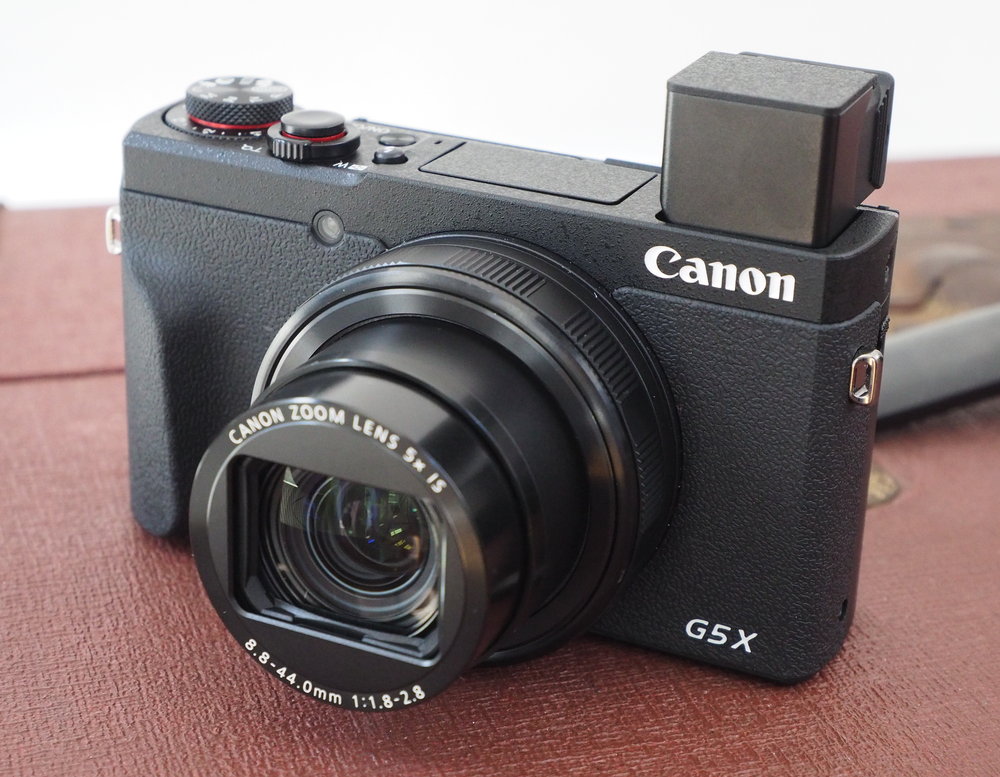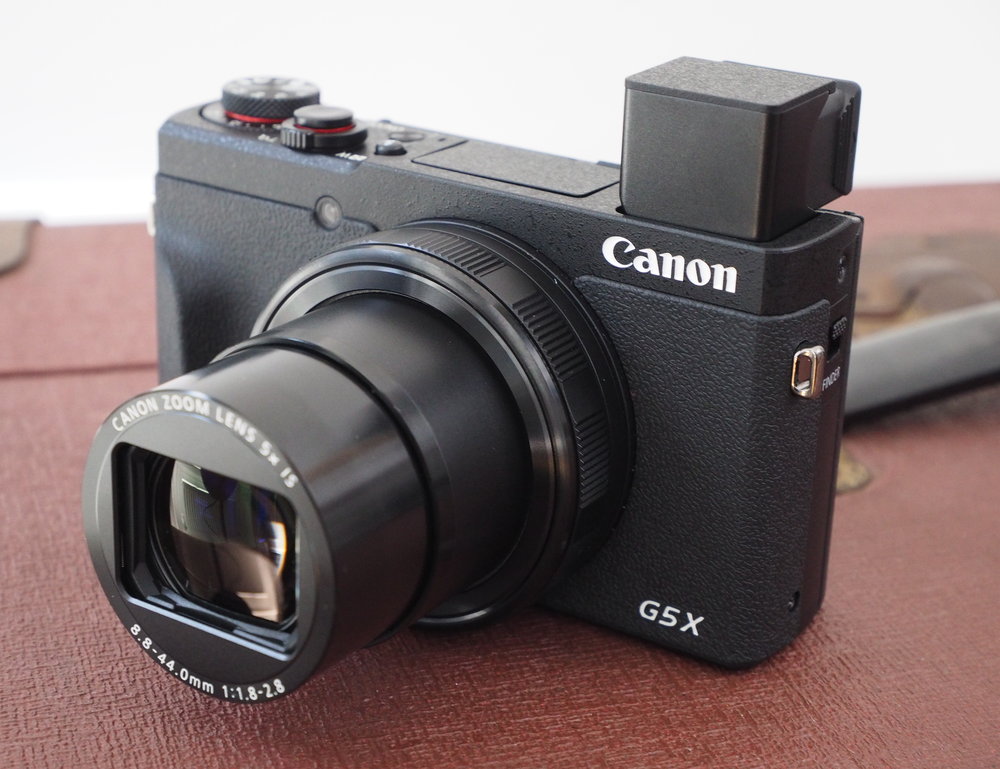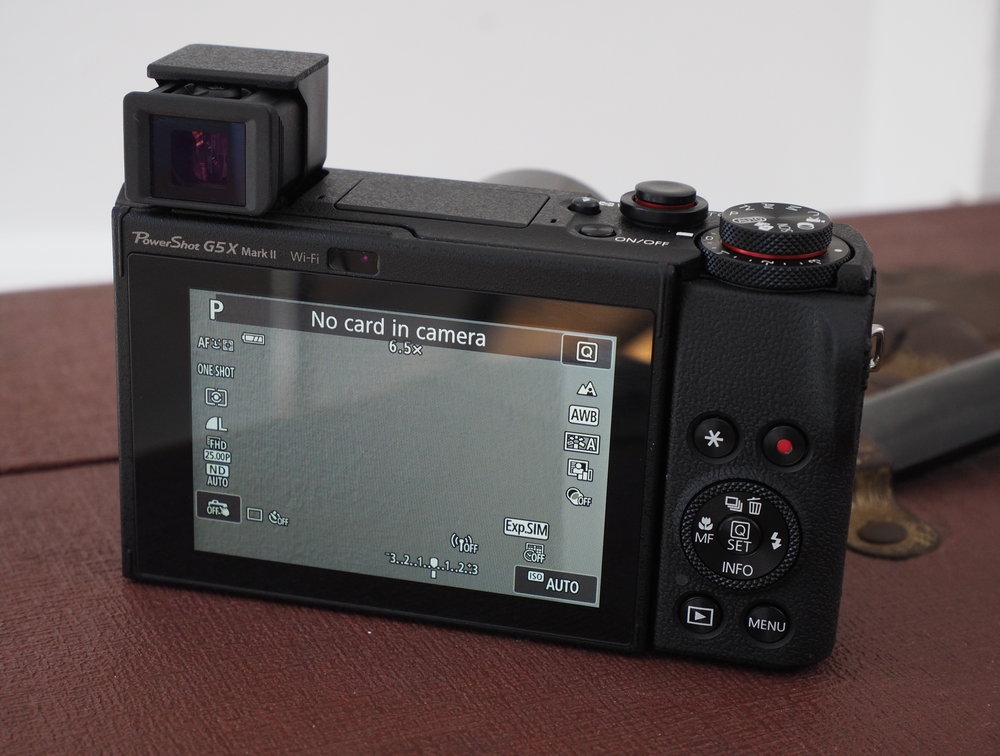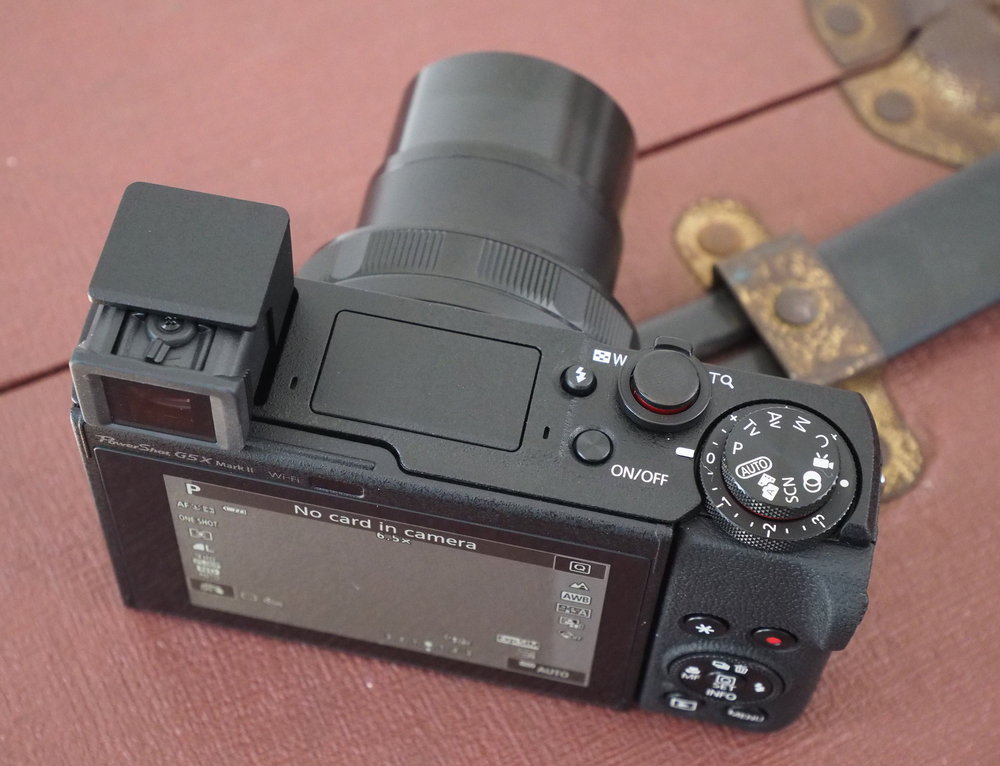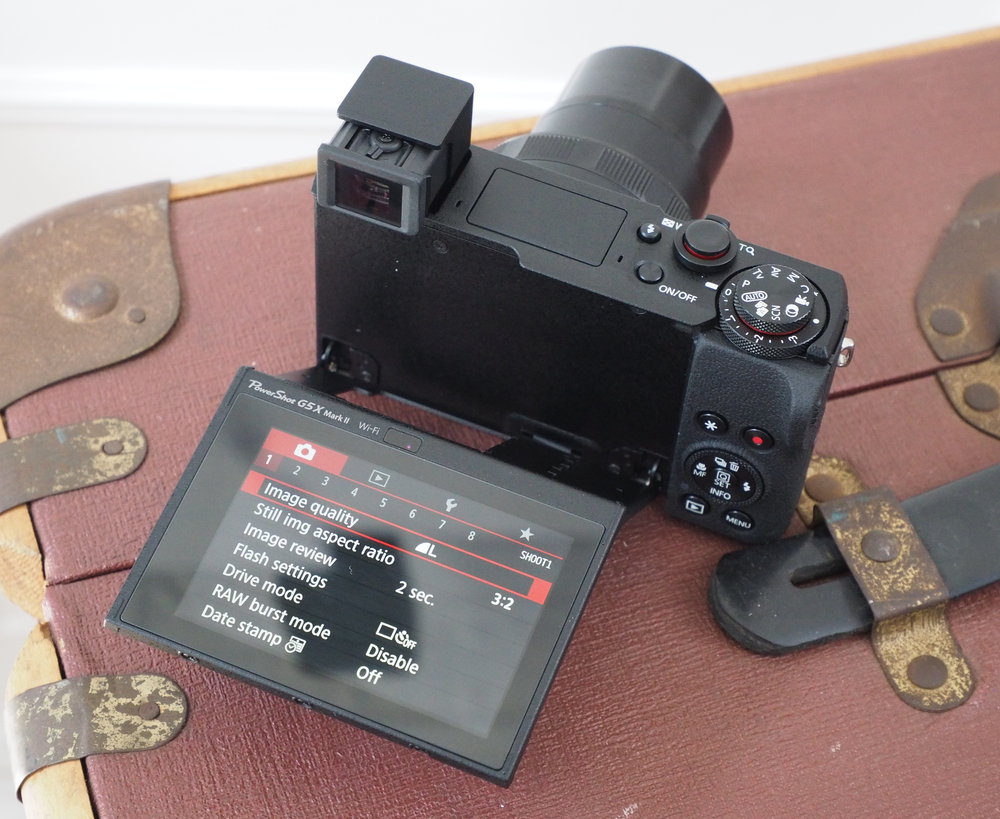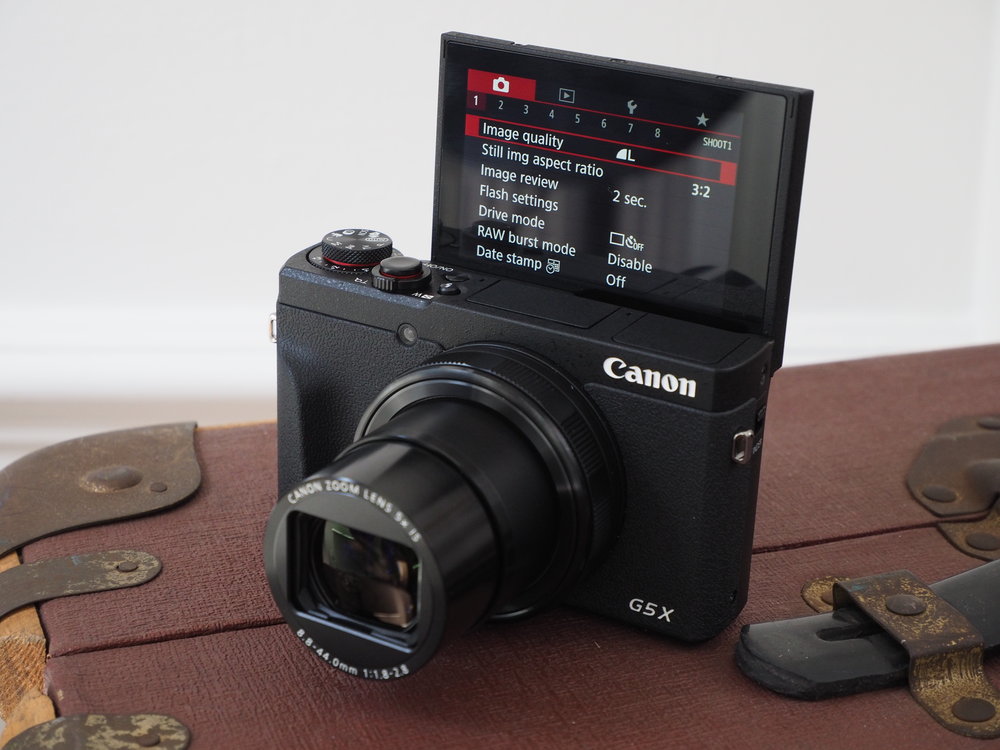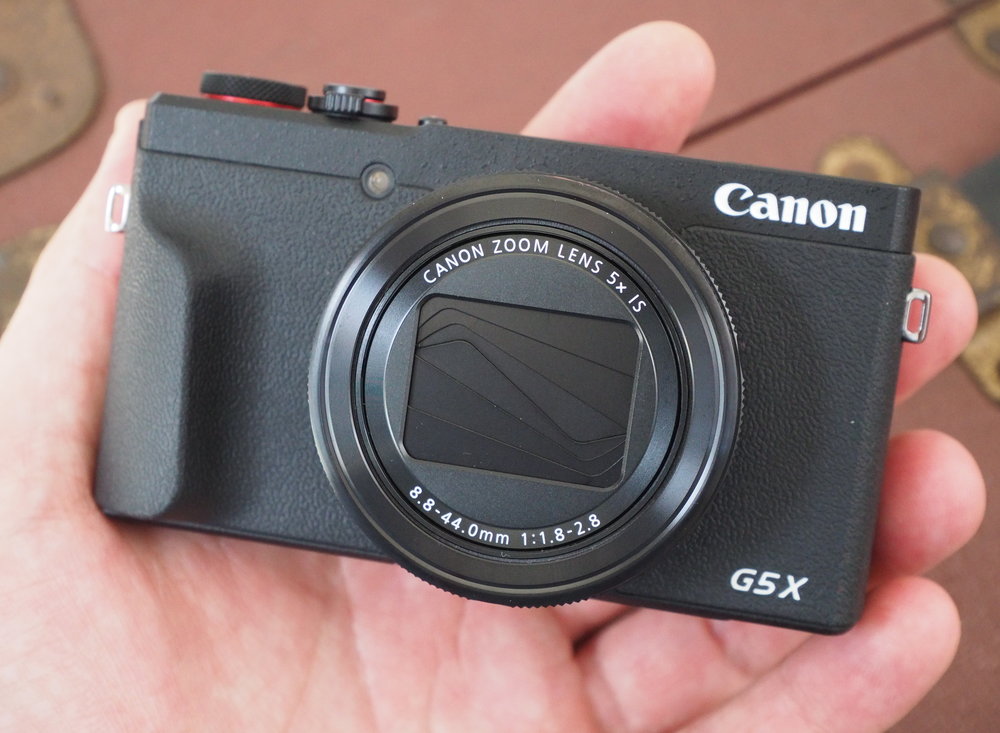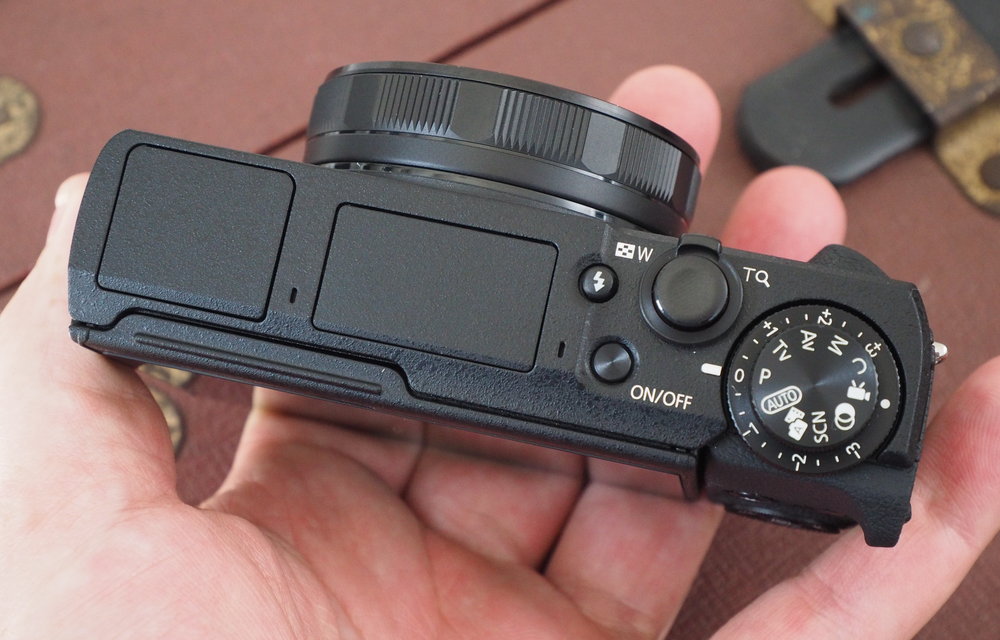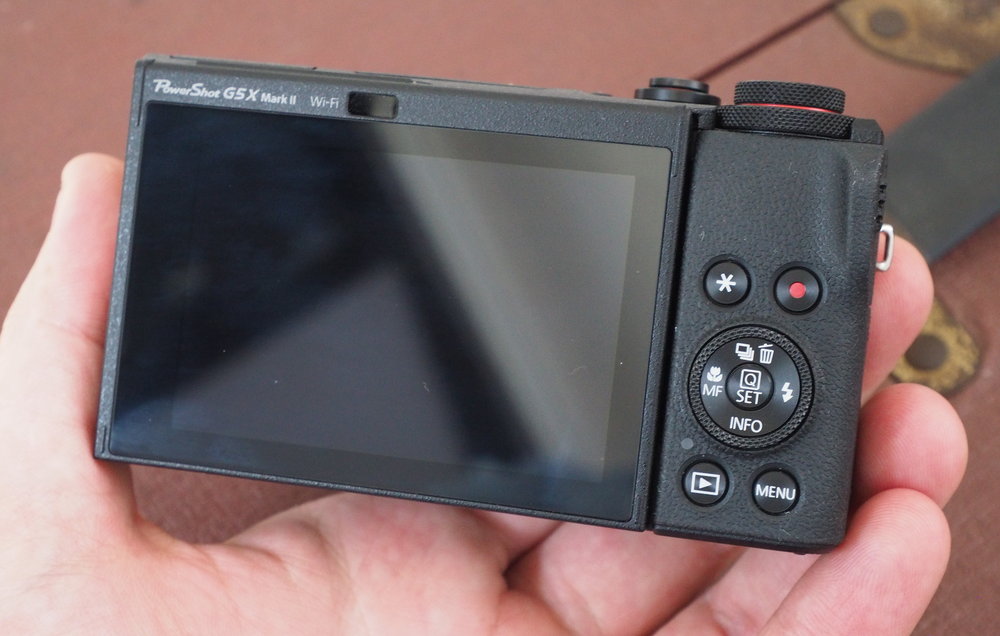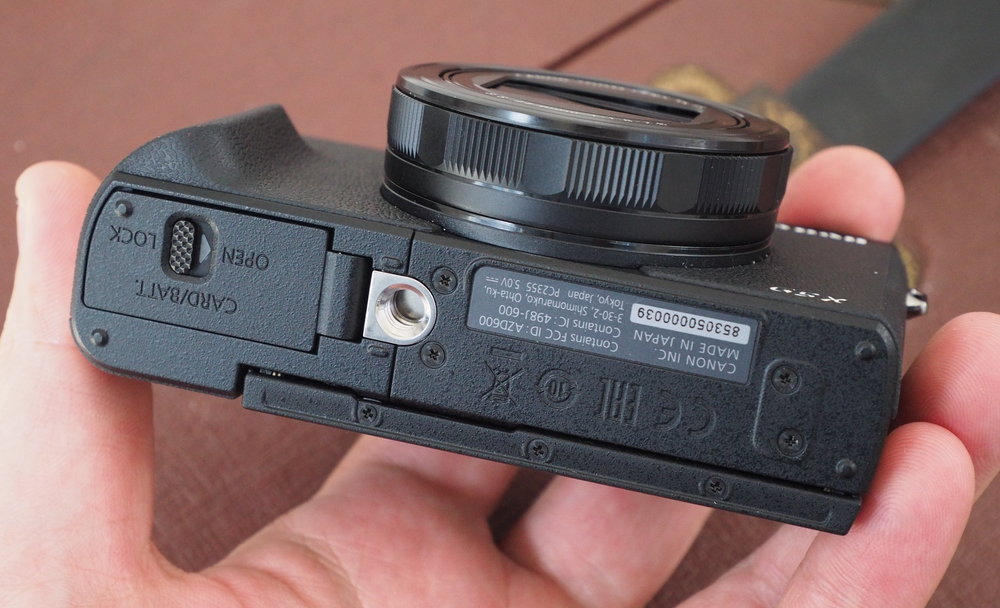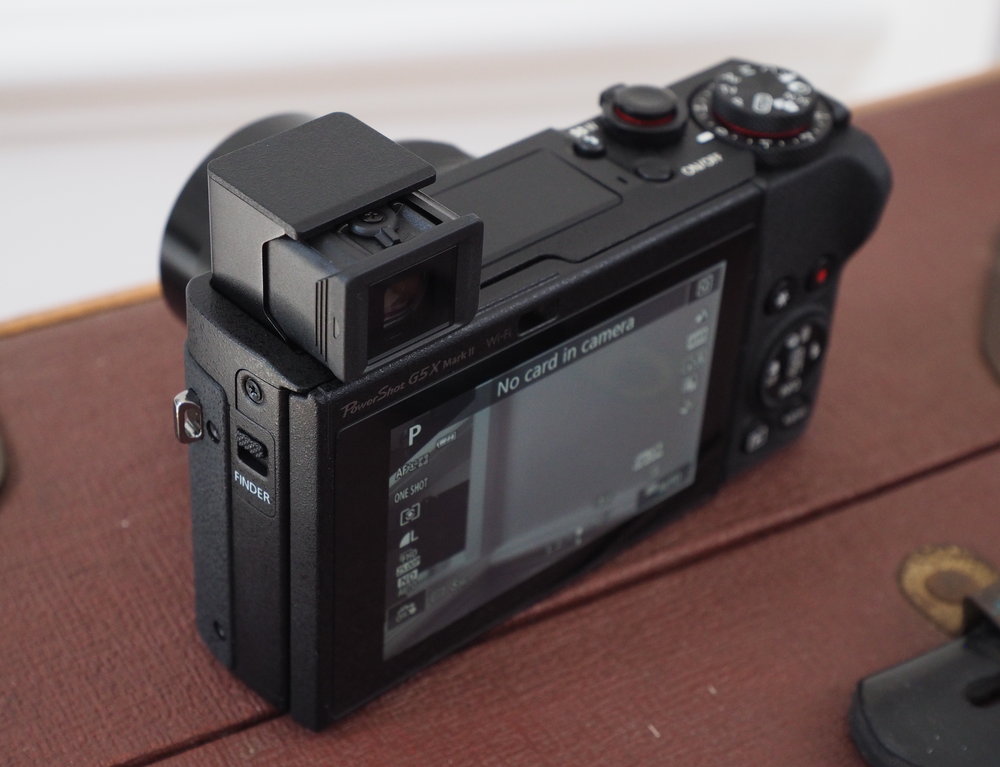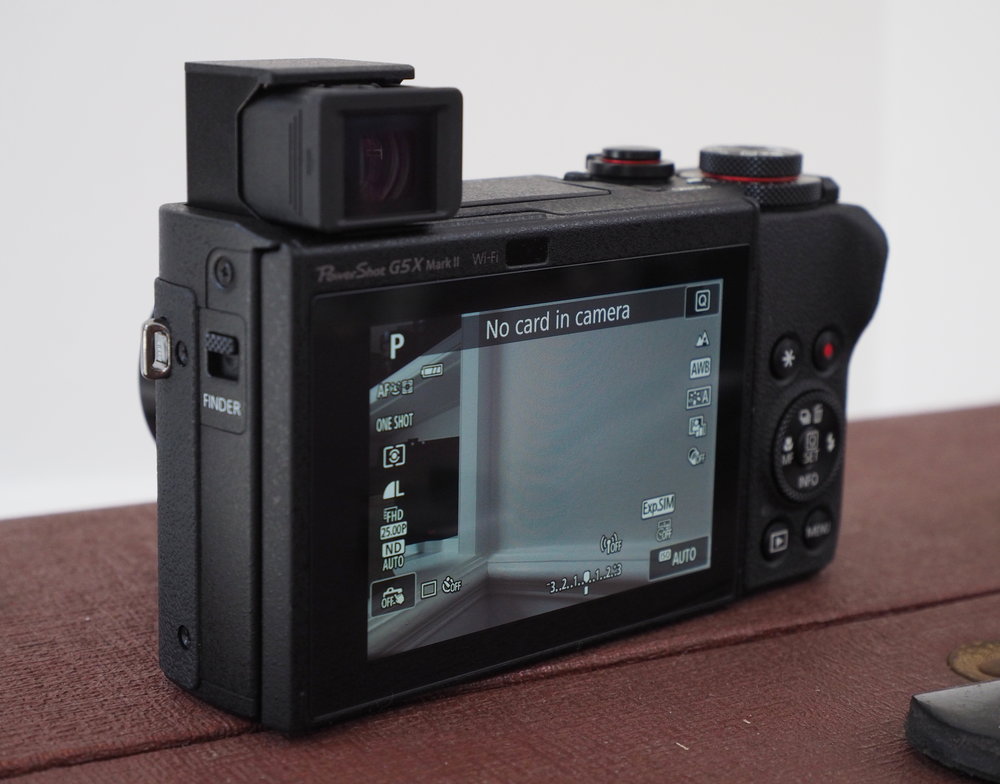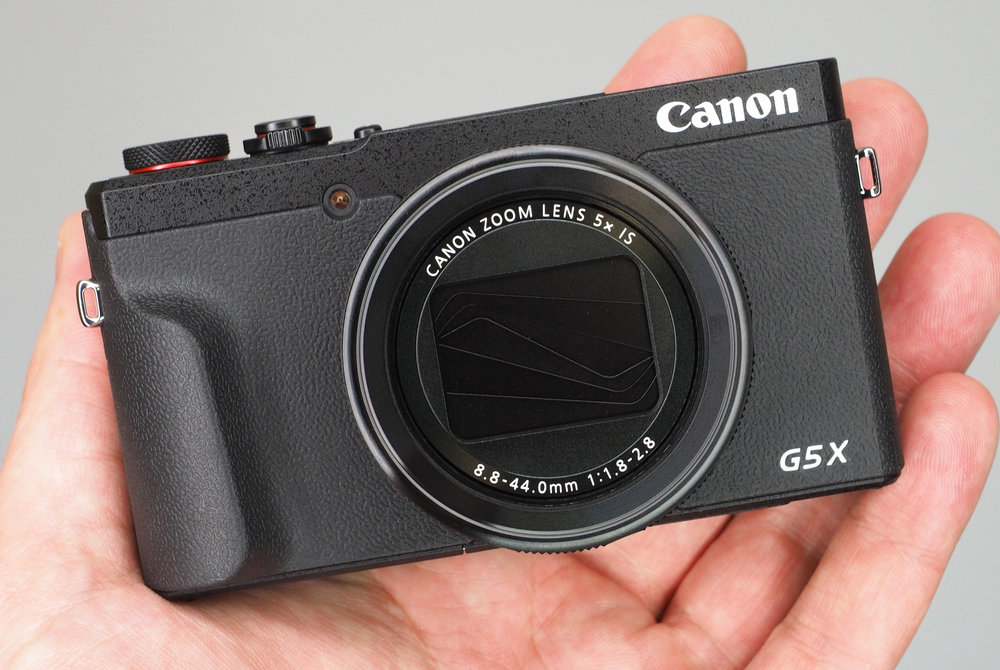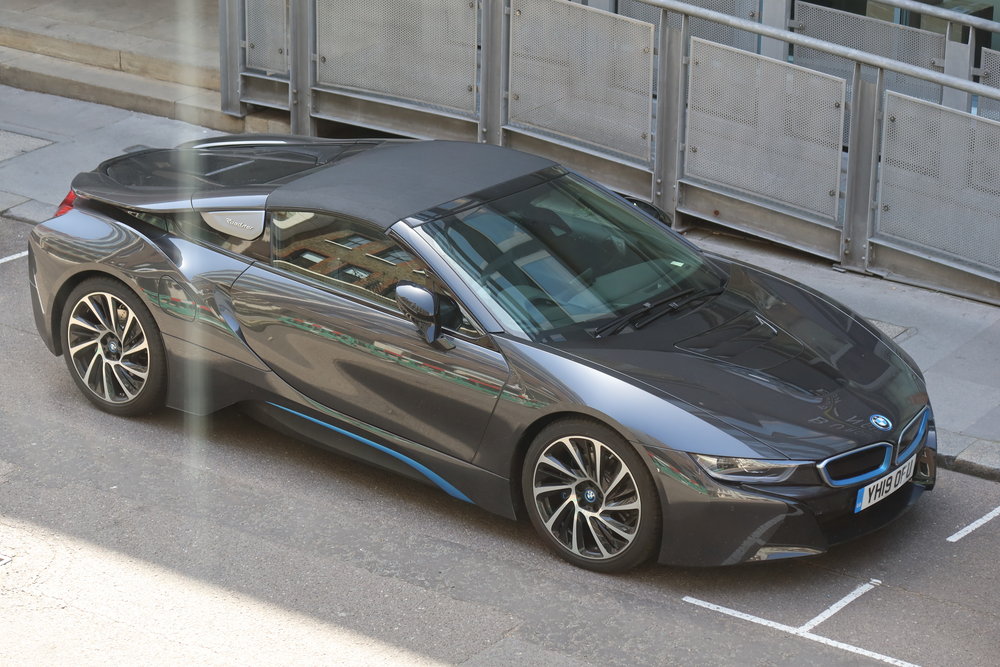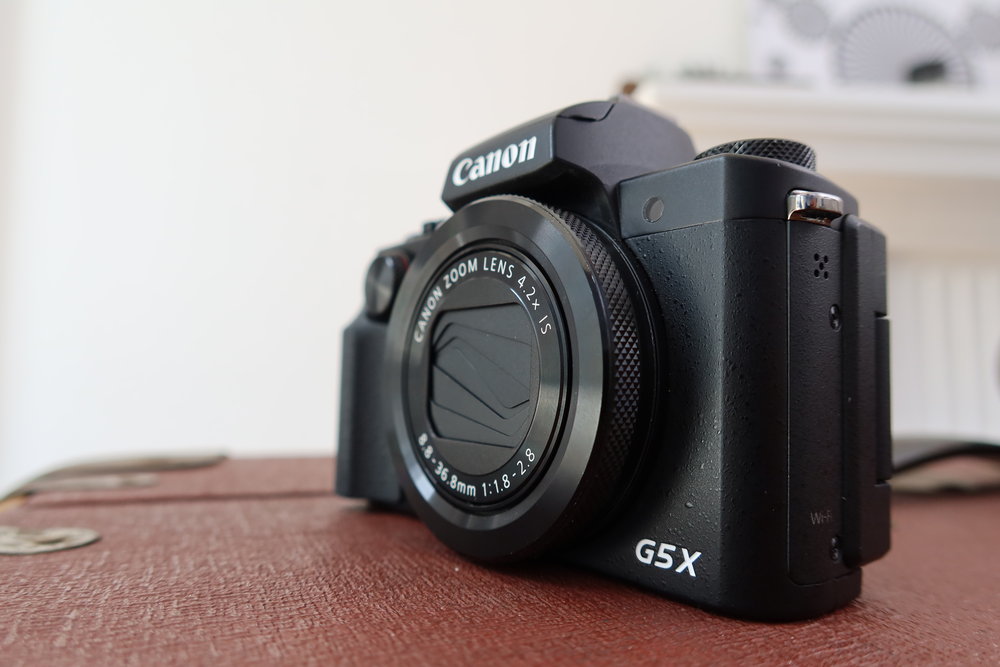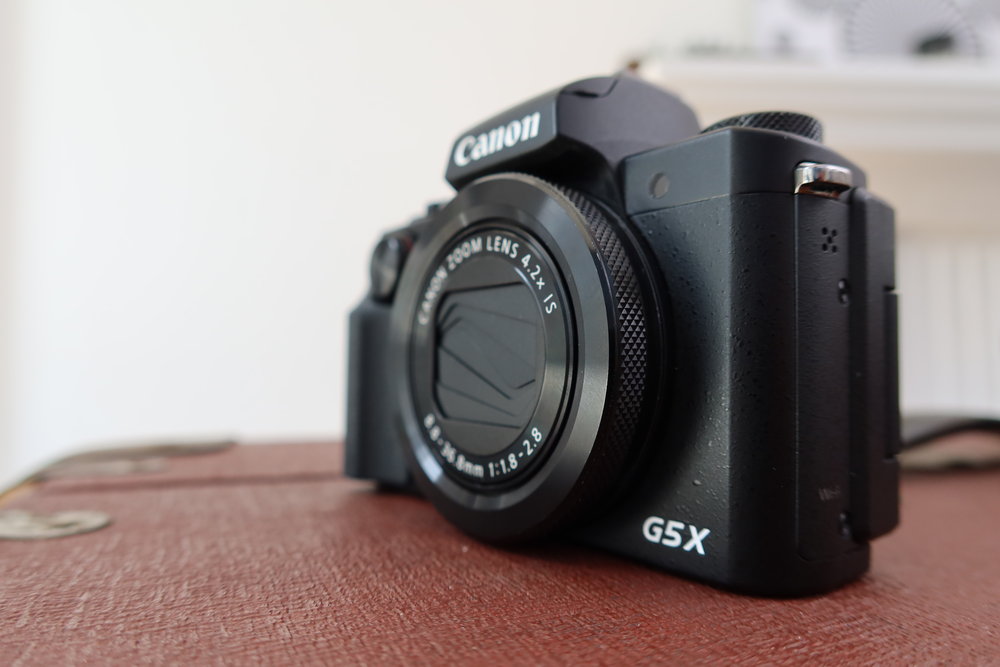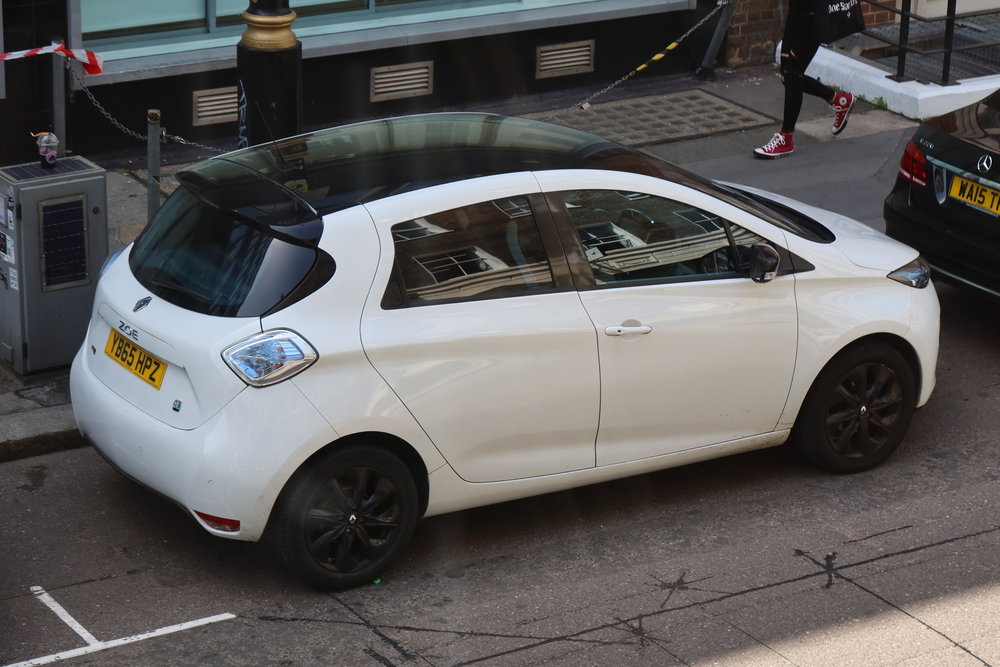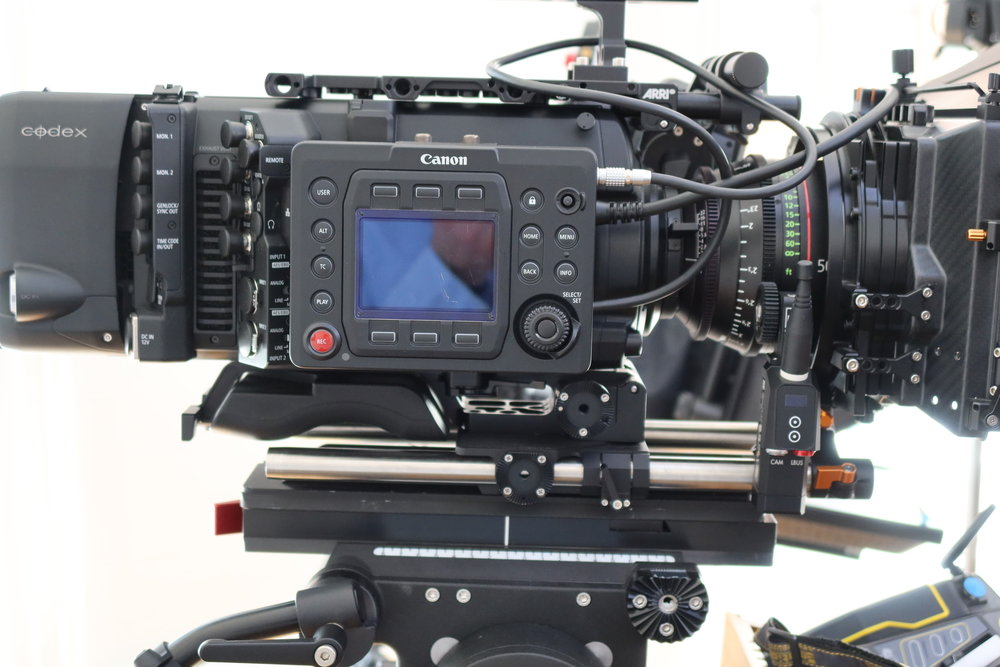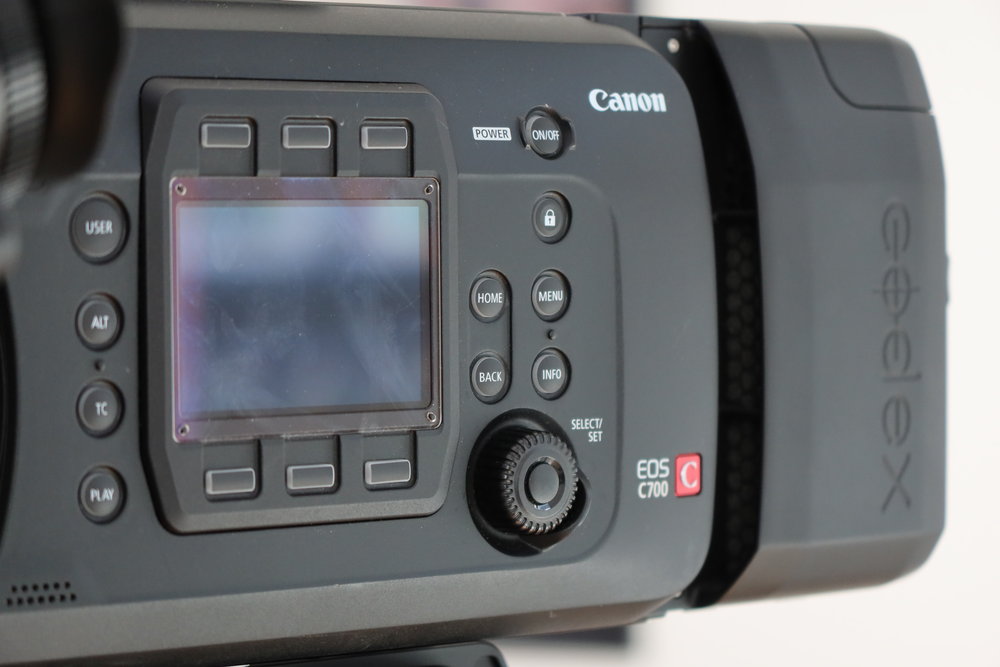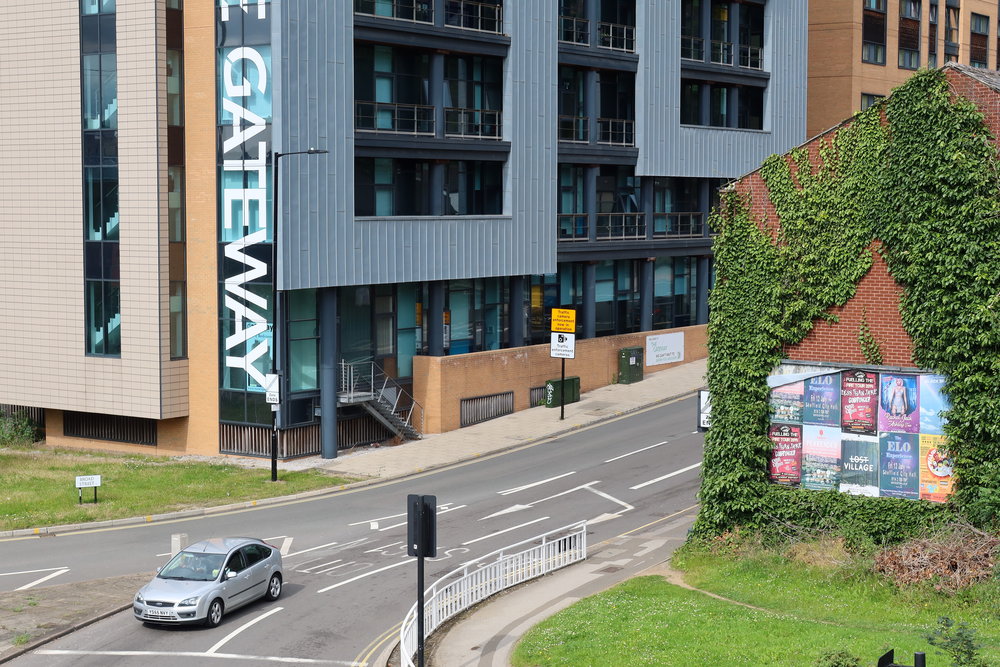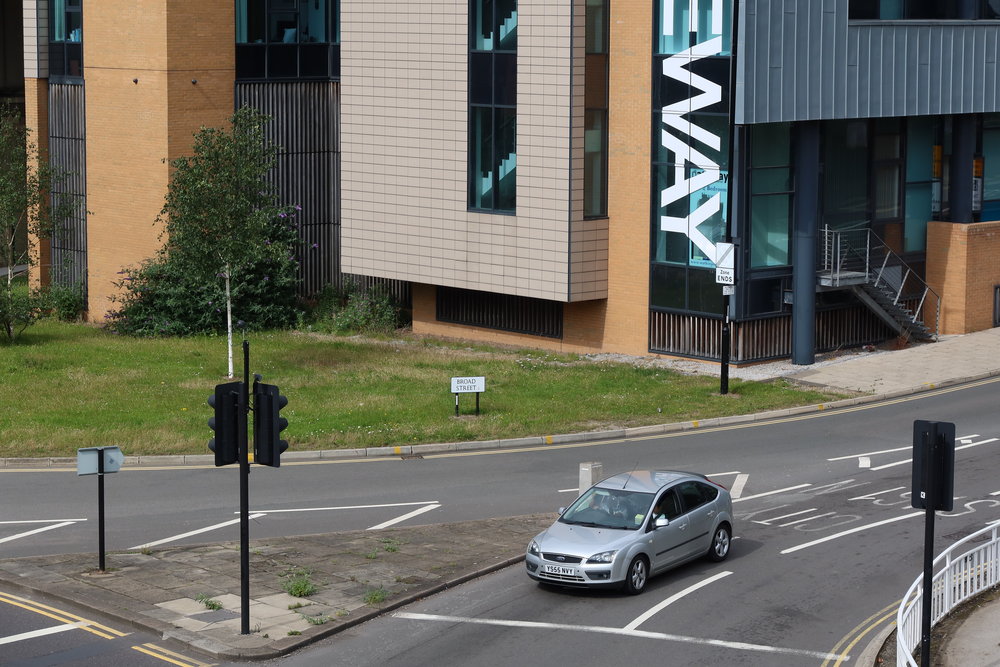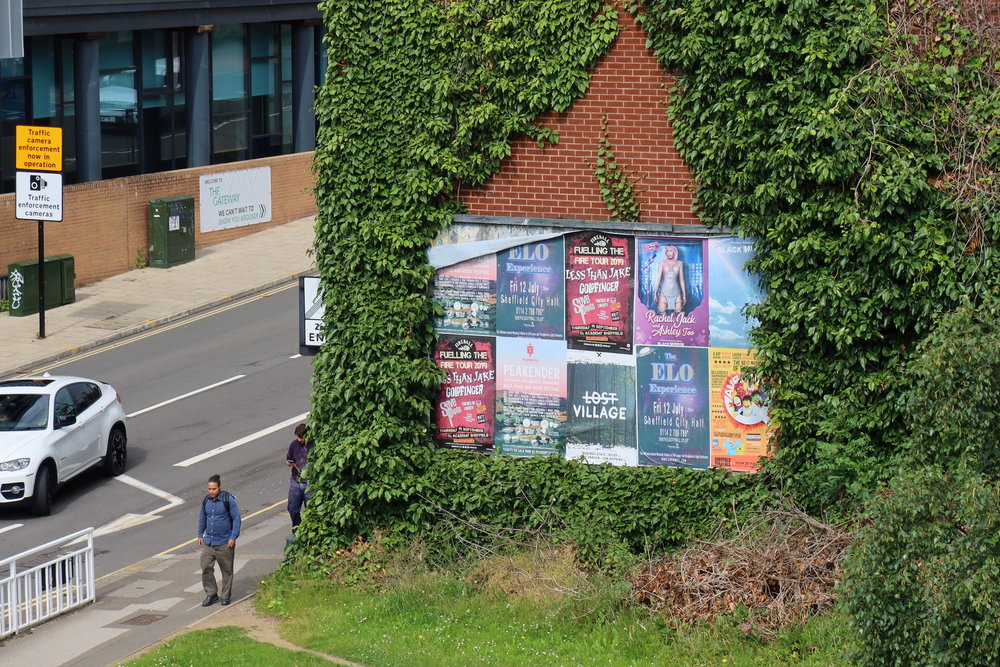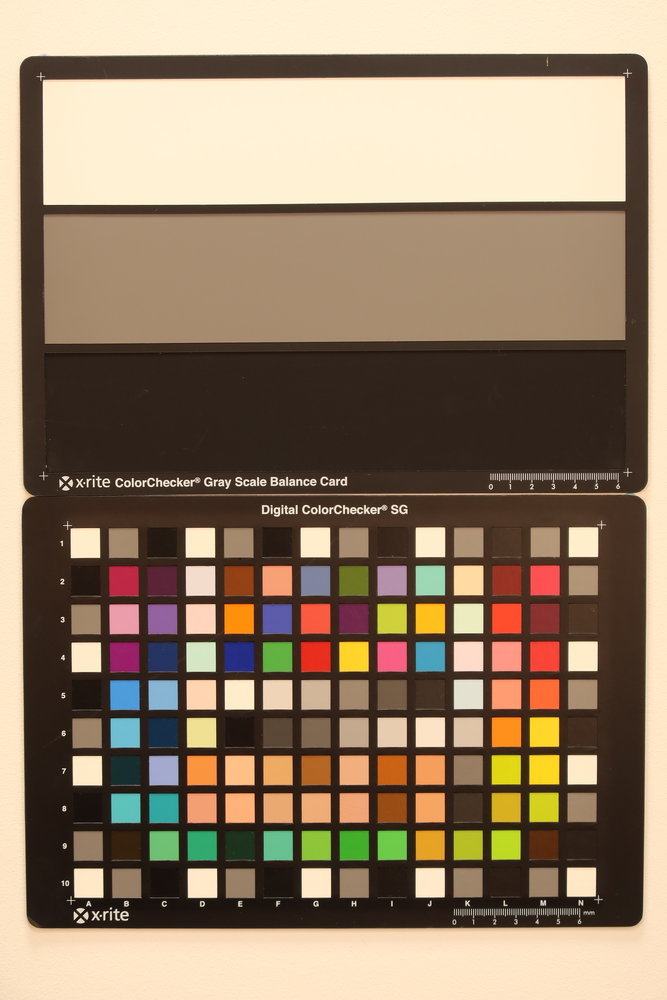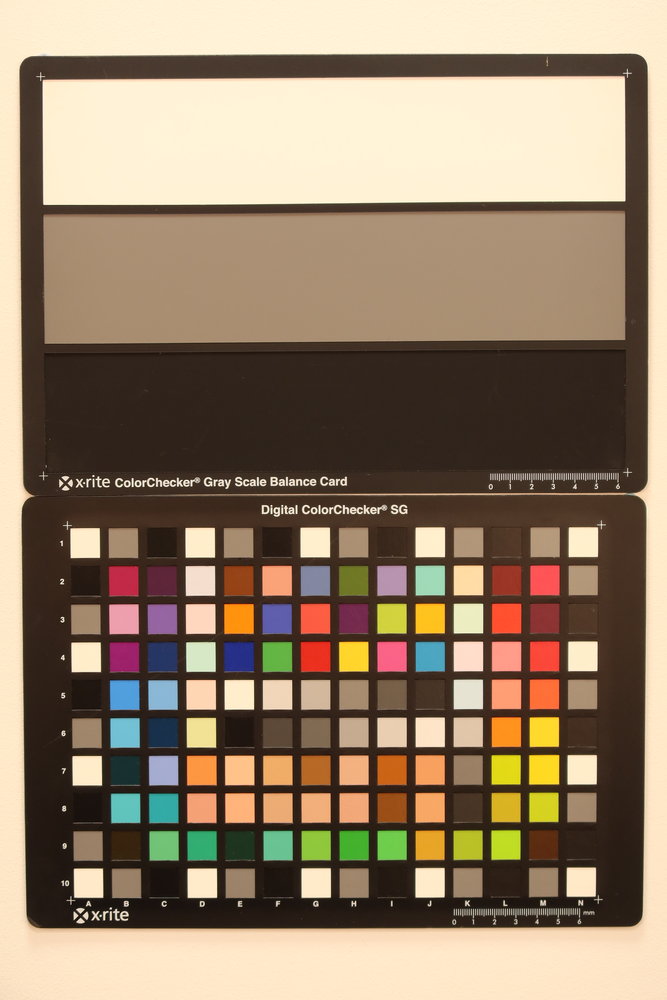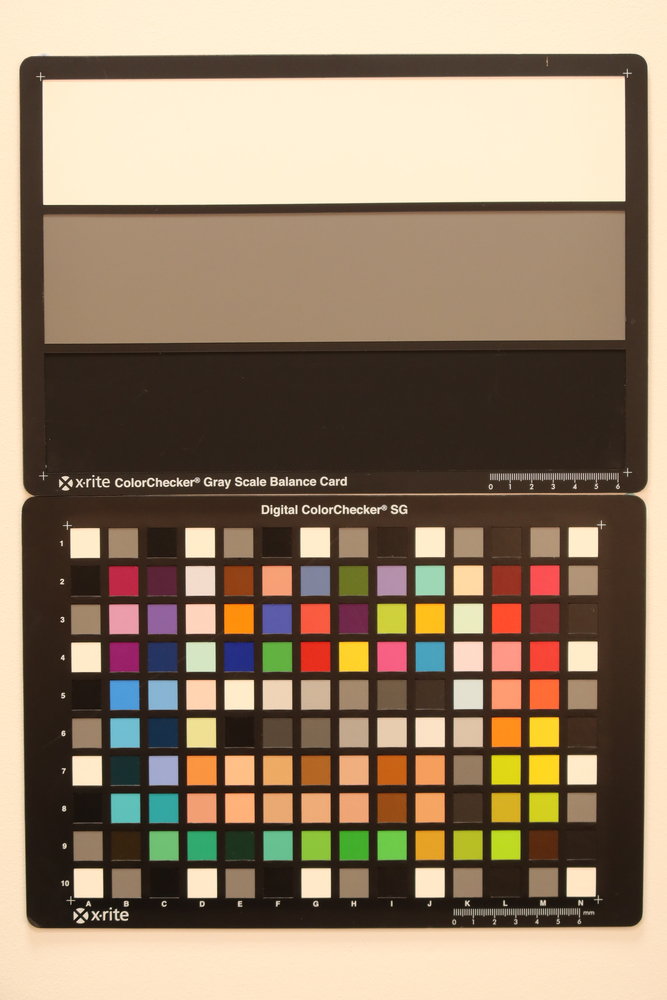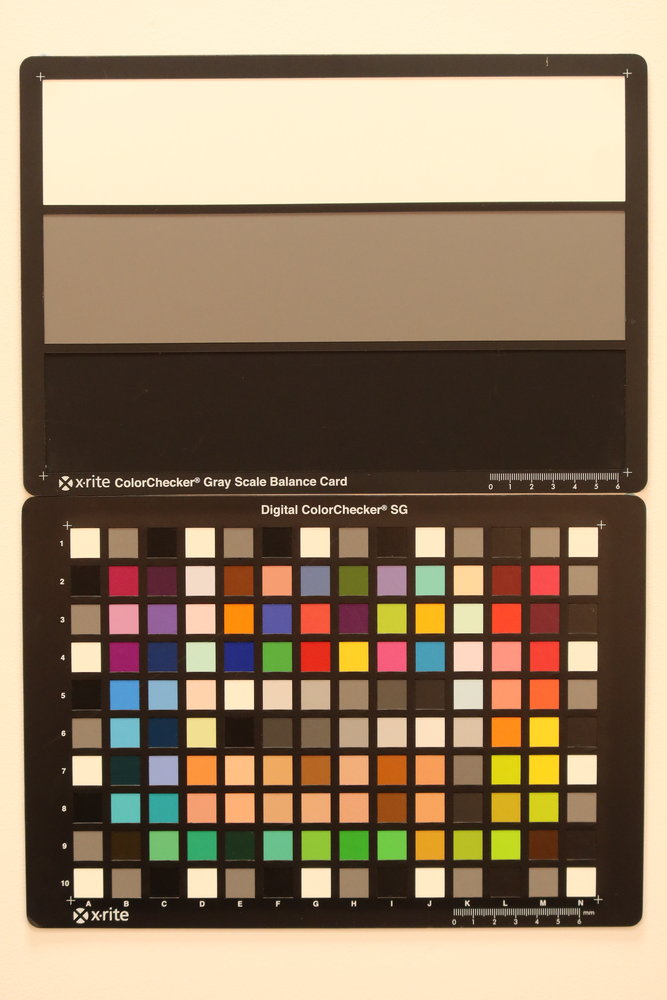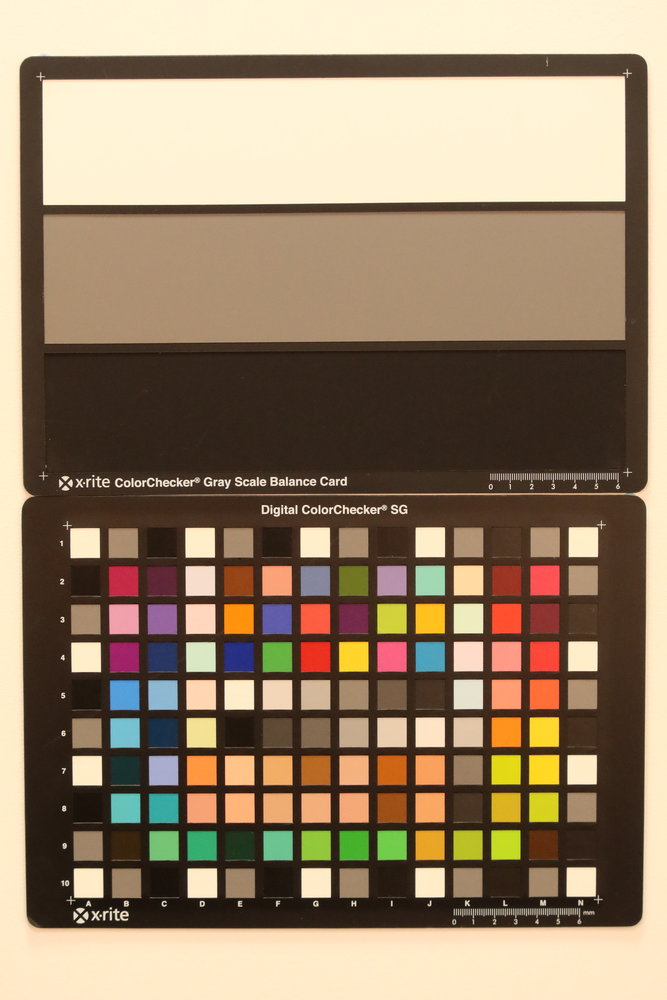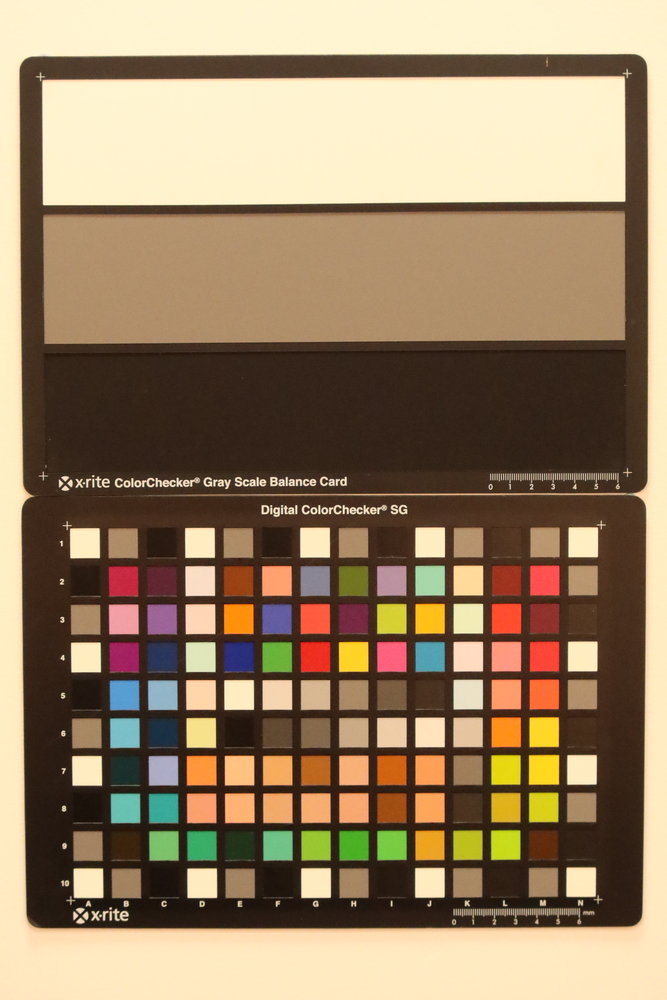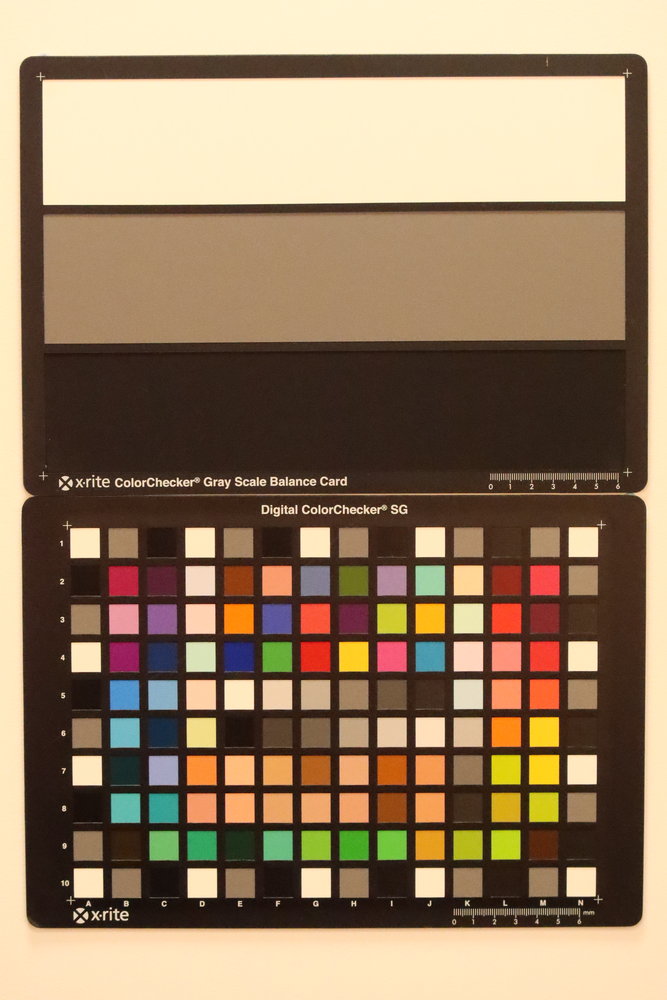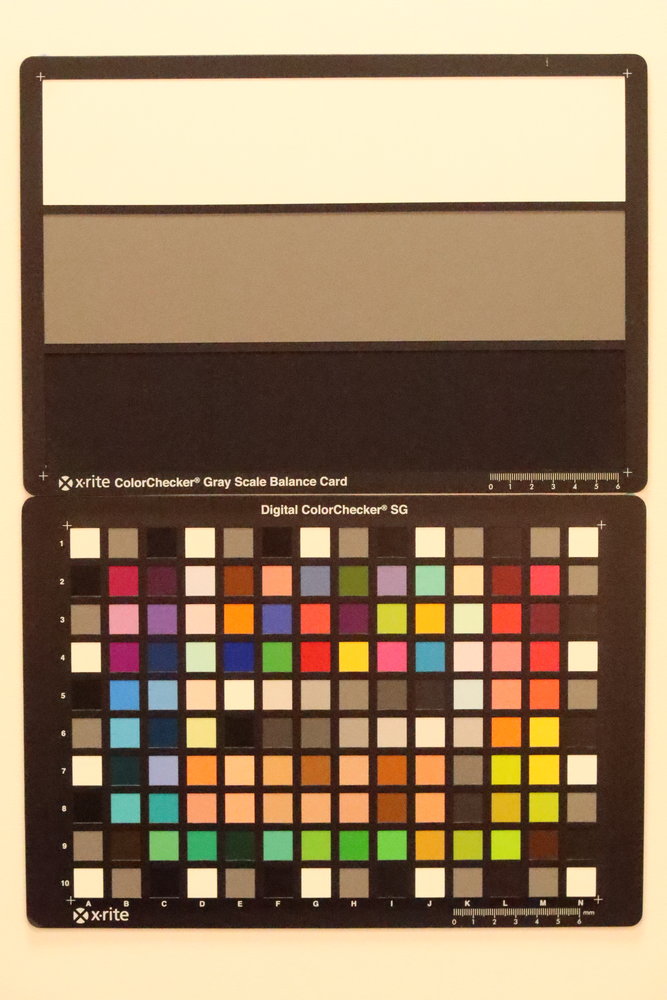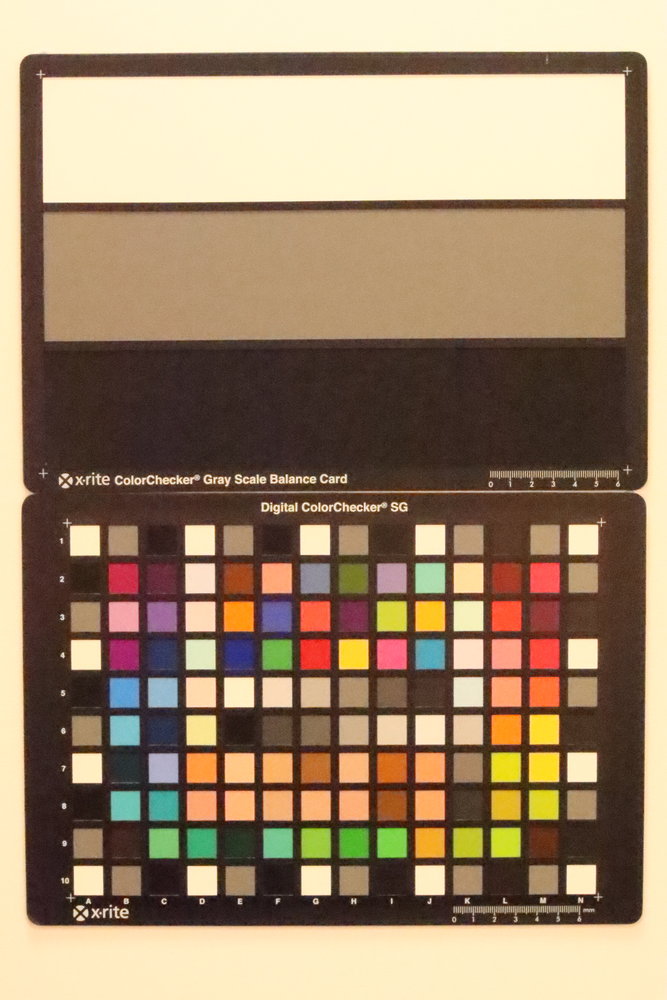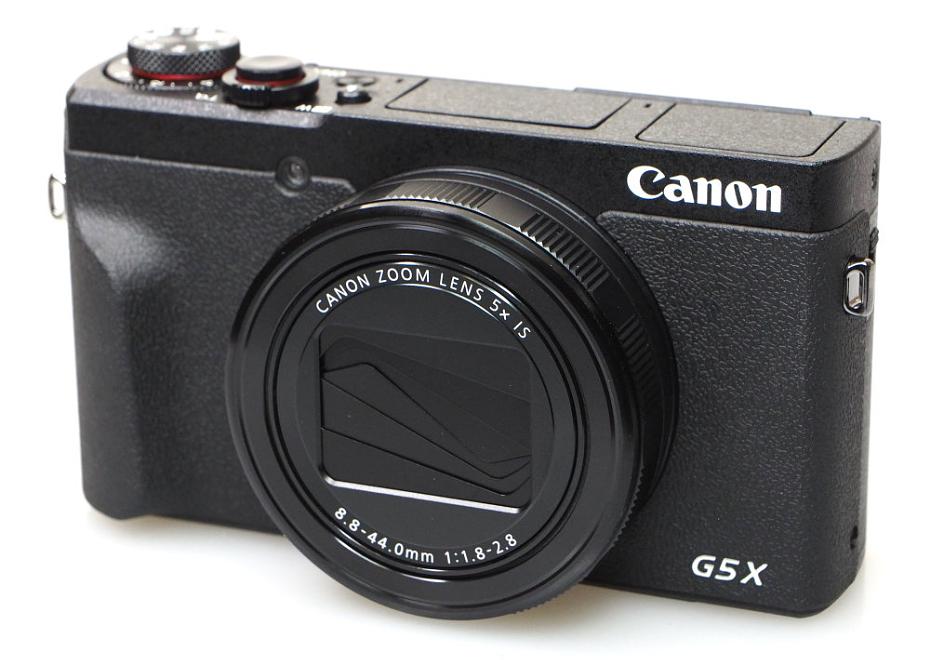
Quick Verdict
The Canon Powershot G5 X Mark II offers an updated high-speed 20mp 1inch sensor, with up to 30/20fps depending on whether you are shooting raw or JPEG, and 4K video recording. There's a new 5x optical zoom lens, with an f/1.8 to f/2.8 aperture, and the lens is equivalent to 24-120mm in 35mm equivalent terms giving a good zoom range. Image quality is very good, with great colour reproduction, and the camera has great noise performance. The new design is more compact than the previous version, with a built-in pop-up electronic viewfinder (EVF).
+ Pros
- New 5x optical zoom lens
- 4K UHD video recording (10min limit)
- More compact camera design thanks to pop-up EVF
- 30fps continuous shooting (raw)
- Tilting touch-screen
- Cons
- Limited customisable buttons
- Plastic camera body and lens ring
- More control in auto and scene modes would be nice

The Canon Powershot G5 X Mark II updates the Canon Powershot G5 X (Mark I), with a new design with a built-in pop-up electronic viewfinder (EVF), and a new 20mp Stacked BSI CMOS sensor, allowing higher speed continuous shooting, with up to 30fps raw shooting possible, and 4K video recording.
Canon Powershot G5 X Mark II Features
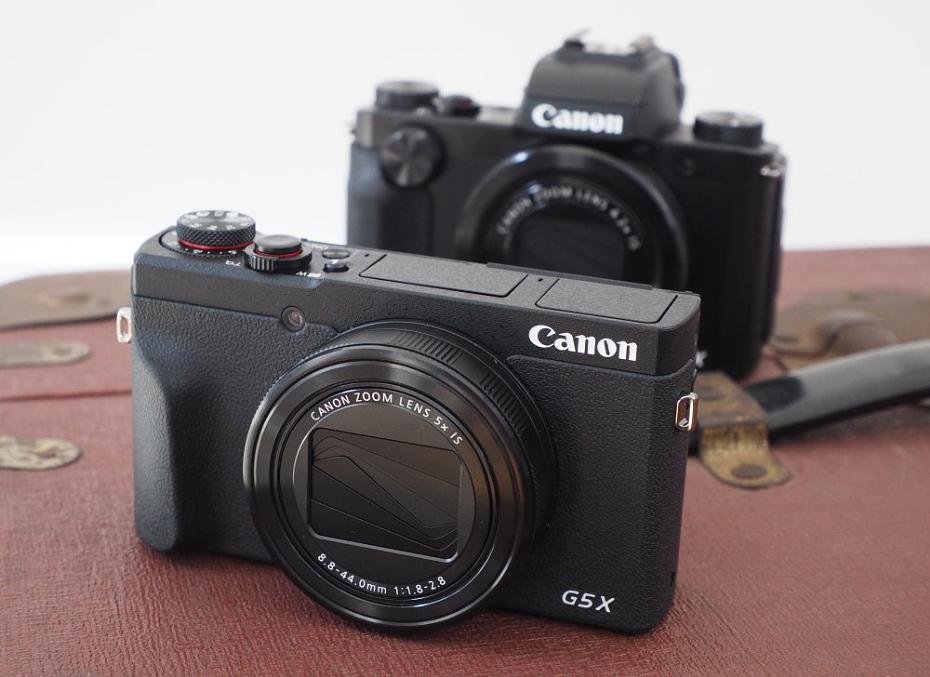
The Canon Powershot G5 X Mark II is a noticeable change from the G5 X Mark I, and gone is the "mini SLR" styling, with top built-in pop-up EVF, and gone is the vari-angle touch-screen, and instead there is a now a tilting touch-screen that can be used for "selfies" and "vlogging", and you now have a more compact camera.
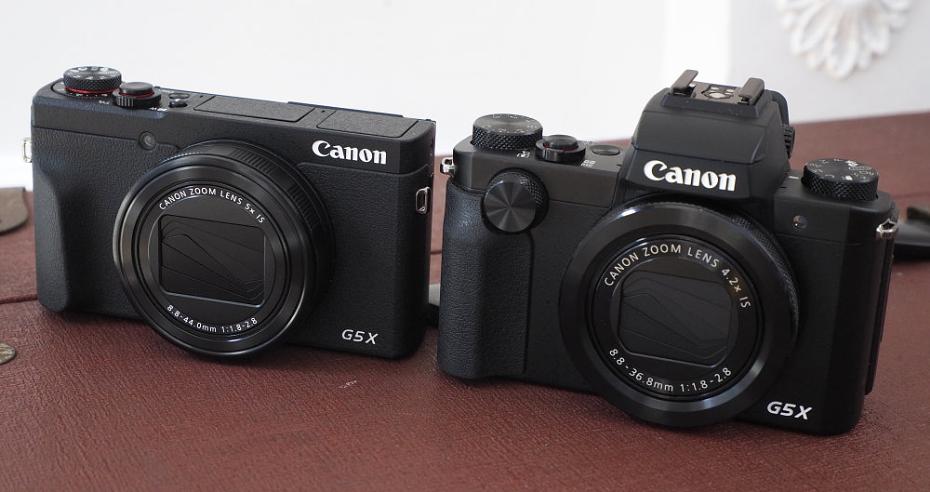
Canon Powershot G5X II Vs G5X Mark I
The electronic viewfinder (EVF) follows in the style of the Sony Cyber-shot RX100 Mark III, and in fact, the sensor, is now Sony's 20mp "Stacked" BSI CMOS sensor (offered in the RX100 IV, and V), offering ultra-high-speed shooting, with up to 30fps continuous raw shooting available at the full 20mp resolution. The G5 X II will let you shoot at 20fps for up to 89 shots in C-Raw, 55 shots in Raw, or 118 shots in JPEG. Using the "Raw burst mode" you can shoot at 30fps, for approximately 70 shots. The camera can shoot at 8fps, with continuous AF active. (The RX100 IV offers 16fps, and the RX100 V offers 24fps).
The camera has P, A, S, M shooting modes, giving you full manual controls, and you can shoot in raw, as well as Canon's new C-raw, which gives you smaller files sizes. You'll also find fully automatic modes, scene modes (including panoramic, and backlight HDR), and creative effects available, which include HDR art options. There are a number of built-in star shooting scene modes, designed to help you get better star photos with: Star portrait, Star nightscape, Star trails, and Star time-lapse movie.
The lens has been updated to a 5x optical zoom lens, rather than the 4.2x optical zoom lens on the Mark I. Yet the lens still maintains the bright f/1.8 aperture at the wide-end, and f/2.8 at the telephoto end, with the zoom range increasing to 24mm up to 120mm in 35mm equivalent terms. Optical Image Stabilisation is built-in, and offers up to 4-stops. Macro focus is down to 5cm, or 20cm at the telephoto end of the lens. There are 31 AF points. The camera offers an extended ISO range, up to ISO25600.
With a 5x optical zoom lens, the Canon Powershot G5 X Mark II offers more optical zoom than the RX100 V (with 2.9x optical zoom), but not as much as the RX100 VI (with 8.3x optical zoom).
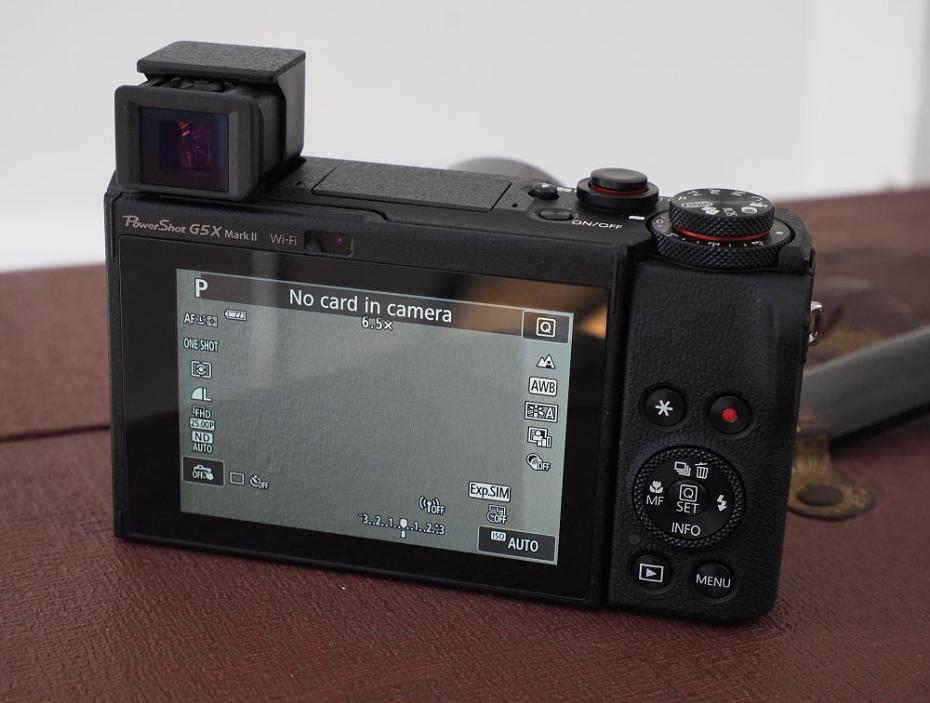
The mode dial sits on top of the exposure compensation dial on top of the camera, and there is a built-in pop-up flash, but gone is the flash hot-shoe. The camera offers up to 230 shots using the screen, 180 shots using the EVF, or up to 320 shots with ECO mode enabled.
Wi-Fi and Bluetooth are built-in, and there's a Wi-Fi connection button on the side to let you quickly connect to a compatible smartphone or tablet.
The camera now offers 4K video recording, at frame rates of 30 or 25fps, for up to 9 minutes and 59 seconds. You can record up to 29 minutes and 59 seconds of FullHD video, and frame rates are available from 24 to 120fps.
Key Features
- 20mp 1inch Stacked BSI CMOS sensor
- 5x optical zoom lens, f/1.8-2.8, 24-120mm equivalent
- Optical Image Stabilisation (OIS) - 4 stops
- 3inch tilting touch-screen, 1040K dots
- Electronic Viewfinder (EVF) with 2360k dots, 0.39inch
- 31 AF points, Face-detection, 5cm close focus
- 30fps continuous shooting (raw burst), 20fps continuous shooting (C-Raw / JPEG)
- ISO125 to ISO25600 (Extended)
- Built-in ND filter (3 stop)
- 4K video, 30, 25fps, up to 9min 59s
- FullHD video, 120fps, 100fps, 60fps, 50fps, 25fps, 24fps
- USB Type-C
- Wi-Fi and Bluetooth built-in
- Buy now on Amazon UK
Canon Powershot G5 X Mark II Handling

The Canon Powershot G5 X Mark II is easy to hold, and easy to use. The camera is comfortable to hold, with a good sized, and grippy rubber grip at the front and back. With a camera body that is mostly plastic the camera feels fairly well built, and the ample rubber coating helps make up for this. We particularly liked the speckled finish to the body of the camera, and the new design has a serious look to it. The lens control ring that surrounds the lens, has audible clicks when you turn it, and as it's made out of plastic it doesn't feel great. The tilting screen is solid, and has a reassuringly tough metal hinge system. The front lens barrel is also made of metal.
The layout of controls is clear, and easy to see, with the 3inch touch-screen giving additional options and controls, making it easy to change settings when needed. The Q-Menu button brings up a number of settings on screen giving quick access to options, and you can use the touch-screen or the rear controls to change these settings.
The control ring around the lens can be customised, and this can be used as a quick way to change settings. There's also the scroll wheel surrounding the 4-way controller on the back of the camera, which not only gives you quick access to focus, drive mode, and flash settings, but can also be used to set the aperture / shutter depending on the mode you're in.
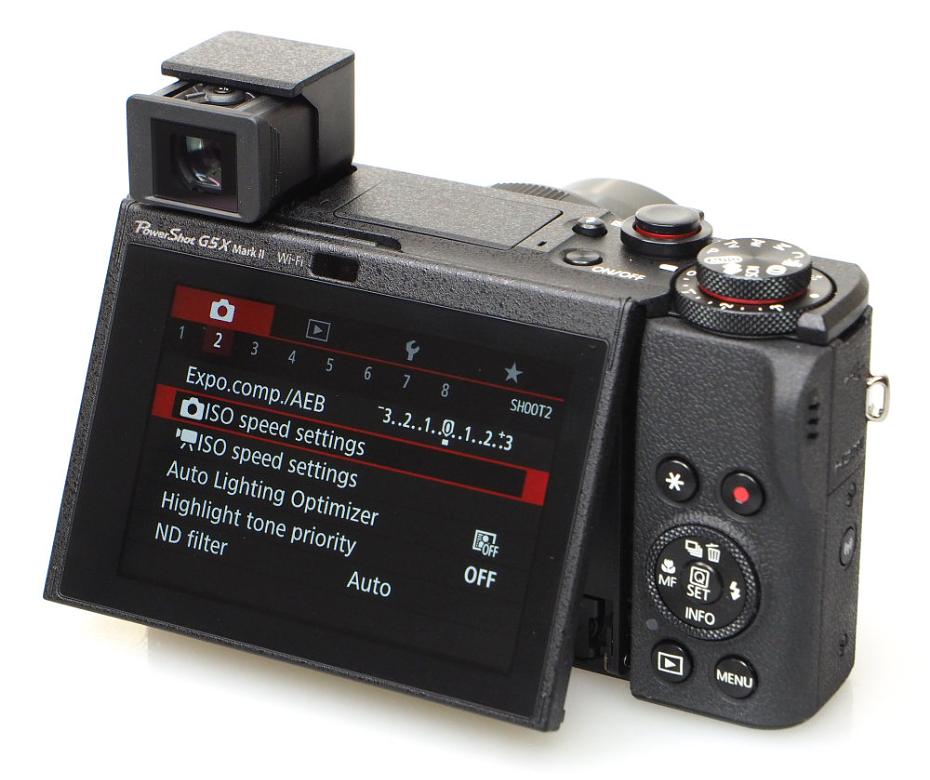
You can also customise the movie record button, giving you quicker access to your favourite settings, however it's a shame there's not more customisable function buttons. You can customise the way the shutter release button works (metering and AF or metering), as we as the * (AE Lock, and you can set this up as a back-focus button), and you can also switch off the rear dial.
The menu system is the same as the one you find on Canon EOS DSLRs, so if the camera is used as a backup camera, or an alternative to a Canon EOS camera, then users of this system should find themselves very familiar with all of the options. You can use the touch-screen to move through the menu options, as well as change settings, and there's a "My Menu" section where you can store your favourite settings for quicker access.
The 3inch touch-screen is clear and bright, and with the screen tilting forwards, it's perfectly suited for "vlogging" and selfie shots, although the pop-up flash, and pop-up EVF can get in the way slightly if you don't move them out of the way. You can also tilt the screen down, and move the screen away from the camera body if needed.
You can use the touch-screen to set the focus point, and this can be anywhere on-screen, even into the far corners. There are 49 AF points, and face-detection works well, although there is no built-in eye-detection.
A switch on the side of the camera is used to pop-up the electronic viewfinder (EVF), and then you pull the back of the EVF towards you to set the EVF in the correct position. The view through the EVF is bright, clear, and has a decent resolution of 2.36m dots. It is the same EVF that is used in the original G5 X, and there is dioptre correction on top of the EVF unit. There's also eye-detection, so that the camera knows when you are holding the camera up to your face.

Battery life - Battery life is rated at 230 shots according to Canon / CIPA test results (using the LCD, 180 when using the EVF), which is quite low, however, this can be extended to 320 shots with the ECO mode switched on. We'd recommend a spare NB-13L battery is purchased. It's nice to see the inclusion of a USB Type-C connection, and the battery can be charged in the camera.
Canon PowerShot G5 X II Hands-On Photos of Equipment
Canon Powershot G5 X II Performance
The performance section is where we look at the image quality performance of the camera. Additional sample photos and product shots are available in the Equipment Database, where you can add your own review, photos and product ratings.
Speed - We took a number of shots to test the camera's responsiveness, from switch on to first photo, shot to shot, focusing speed etc. We take a number of shots and then use the average to ensure accurate and consistent tests, making it easy to compare with other cameras.
| Shutter Response | <0.05secs |
| Wide - Focus / Shutter Response | 0.125secs |
| Full zoom - Focus / Shutter Response | 0.125secs |
| Switch on Time to Taking a Photo | 1.3secs |
| Shot to Shot without Flash | 0.175secs |
| Shot to Shot with Flash | 2.2secs |
| Continuous Shooting - JPEG (shots before slow down) |
19fps, 106 shots*, 18 seconds to write to card |
| Continuous Shooting - Flash | 2.2secs |
| Continuous Shooting - RAW | 20fps, 56 shots* (raw) 30fps, 63 shots* (raw burst mode) |
The G5 X Mark II gives fast focus, and very fast shutter response, with excellent shot-to-shot speeds (as long as you're not using flash). In raw burst mode, you can't change the ISO speed unless you switch to manual mode, and the camera uses an electronic shutter. *before slowdown, single-AF.
Canon PowerShot G5 X II Sample Photos
Sample photos - The camera delivers excellent colour reproduction, with Canon's consistent results. Exposure is reliable, with little need for the exposure compensation dial to be used, unless you want to creatively adjust your photos. The Auto Lighting Optimizer (ALO) option helps record more dynamic range in images, without looking unnatural. To access the automatic HDR mode(s) you need to use the Scene mode or Creative Effects mode. This then limits your control over settings (including exposure compensation, which becomes unavailable), which can be quite frustrating at times. Auto Exposure Bracketing is available, but if you then want to merge the photos into one image, you'll have to do this later on a computer.
Canon PowerShot G5 X II Lens test images
Lens Performance - The lens gives good results at all focal lengths, with minimal signs of distortion, with this being automatically corrected in-camera. In our outdoor shots we struggled to see any signs of vignetting, although there is more likely to be some at the wide-angle end of the lens. Macro performance is good, with the camera able to focus on subjects as close as 5cm at the wide-angle end of the lens, and 20cm at the telephoto end of the lens. Macro images are a little softer at the telephoto end of the lens, and this is more noticeable when shooting at f/2.8. Pleasing background blur (bokeh) is possible. The lens is very resistant to flare, and we struggled to find any even when shooting into the sun. Purple fringing is very well controlled.
Canon PowerShot G5 X II ISO test images
Noise Performance - For the lowest noise and best detail possible we would recommend using ISO125 to ISO800, as images have low levels of noise and good levels of detail. For lower light situations ISO1600 to ISO3200 still provides good results, although noise increases and detail is reduced more noticeably at ISO3200. At ISO6400 / ISO12800 noise levels become strong and we would recommend avoiding this setting if possible, although results may still be useful if resized and used on the web. ISO25600 is best avoided as noise is very high, and detail is low.
Canon PowerShot G5 X II White-balance test images
White Balance Performance - Auto White Balance (AWB) gives a warm result under tungsten lighting, with a similar result using the tungsten preset. There is an "AWB Cool" setting that you can toggle on, and this gives much more neutral results (which will be useful for product shots). The camera also gives a warm result under mixed lighting, so you may want to use manual white balance. AWB performs well under fluorescent lighting, with the fluorescent preset giving a magenta colour cast.
Panorama mode - The camera features an automatic panoramic mode, where you simply press (and hold) the shutter release button and pan the camera from one side to the other. Results are good, with a relatively high resolution photo produced (31mp, 2560pixels high), and stitching is reasonable.
Video - The Canon Powershot G5 X Mark II offers 4K (UHD) video recording, at 25fps, using most of the sensor, meaning there is only a slight crop, and 4K video is limited to 10 minutes. The maximum ISO speed available for 4K video recording is ISO3200, and ISO6400 for FullHD. You can also record HDR video, at FullHD resolution. High speed video recording is available, and you can select 100fps at FullHD. Video quality is good, and optical image stabilisation helps keep the video steady.

Value For Money
The Canon Powershot G5 X Mark II is available for £849 from Amazon UK, which makes it quite expensive, but arguably quite good value for money in comparison to the RX100 V, and RX100 VI.
Sony Cyber-shot RX100 V, 20mp, 2.9x optical zoom, 24fps, 4K video, EVF, £799
Sony Cyber-shot RX100 VI, 20mp, 8.3x optical zoom, 24fps, 4K video, EVF, £1060
Panasonic Lumix LX10/LX15, 20mp, 3x optical zoom, 10fps, 4K video, no EVF, £419
Canon Powershot G7 X III, 20mp, 4.2x optical zoom lens, 4K video, mic socket, no EVF, £699
Have a look at more options in our Top 10 Best Serious Compact Cameras list. You'll also need to buy a memory card and a case or bag to keep your camera safe and protected - have a look at our complete guide to camera bags.
Canon Powershot G5 X Mark II Verdict
The Canon Powershot G5 X Mark II, takes the G5 X, and takes a big step forward in terms of speed and performance, with up to 30fps continuous shooting (in raw), and 20fps continuous shooting in JPEG/raw. The lens has been updated, and the camera now offers 5x optical zoom lens, giving a useful range of 24mm to 120mm in 35mm equivalent terms. The ISO range has been extended, and noise performance is very good, thanks to the use of a 1inch BSI CMOS sensor. The camera also now offers 4K video recording, although this is limited to 10 minutes.
The change in design of the camera, is quite clearly aimed at offering a direct competitor to the Sony Cyber-shot RX100 series, giving more optical zoom than the Sony Cyber-shot RX100 V. If you're a fan of Canon cameras, and already use Canon EOS cameras, then the G5 X Mark II should be easy and familiar to use, giving the same Canon colour reproduction that we've come to expect. Where the G5 X Mark II differs, is that the camera can shoot at impressively fast speeds, with rapid focus, fast shot-to-shot times, and excellent continuous shooting speeds. It's just a shame that in order to shoot at 30fps, you have to shoot raw images, and if you want to shoot in JPEG, you're limited to 20fps. However, that should be fast enough for most people.

